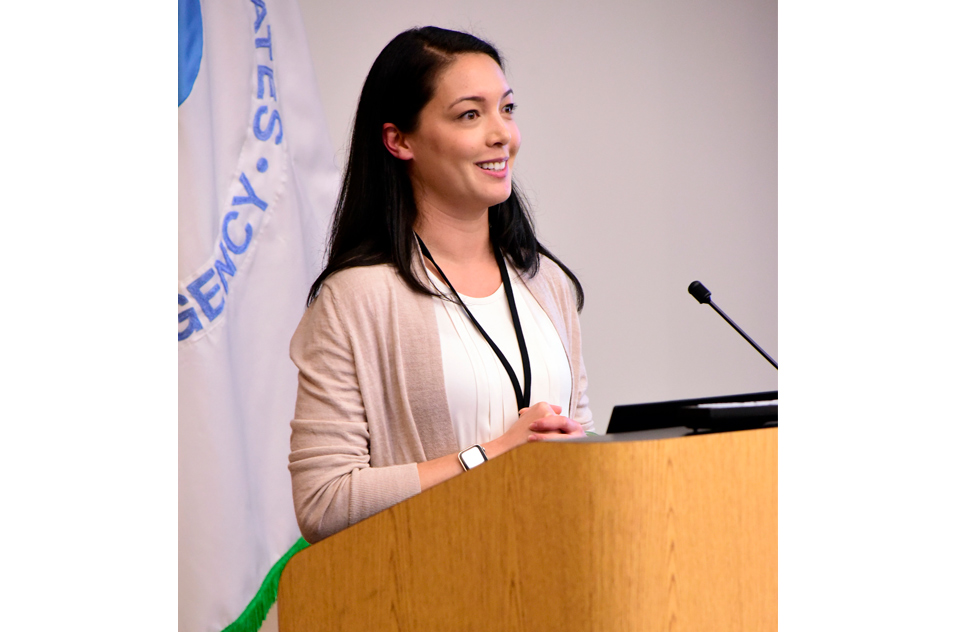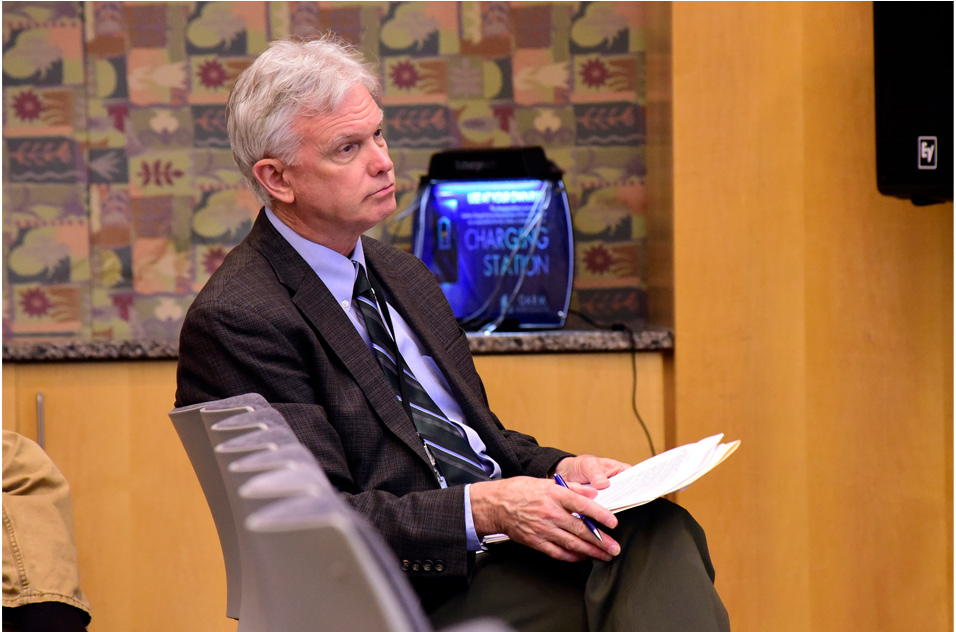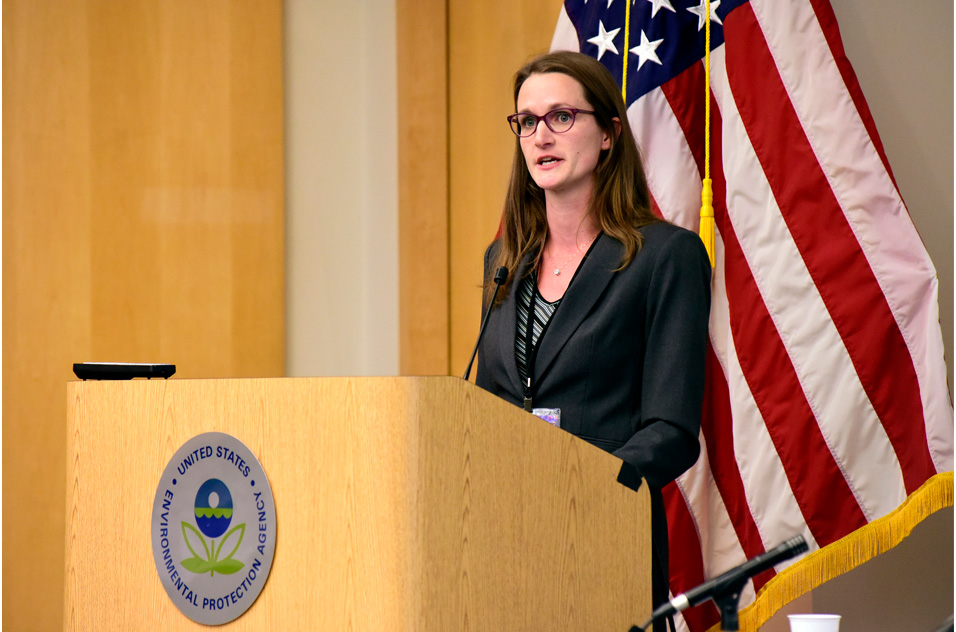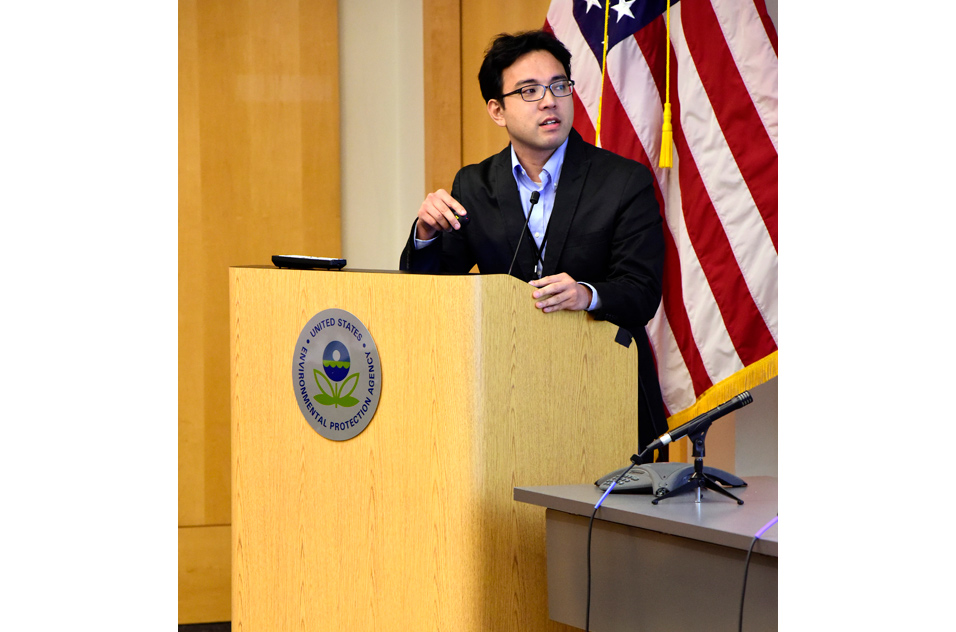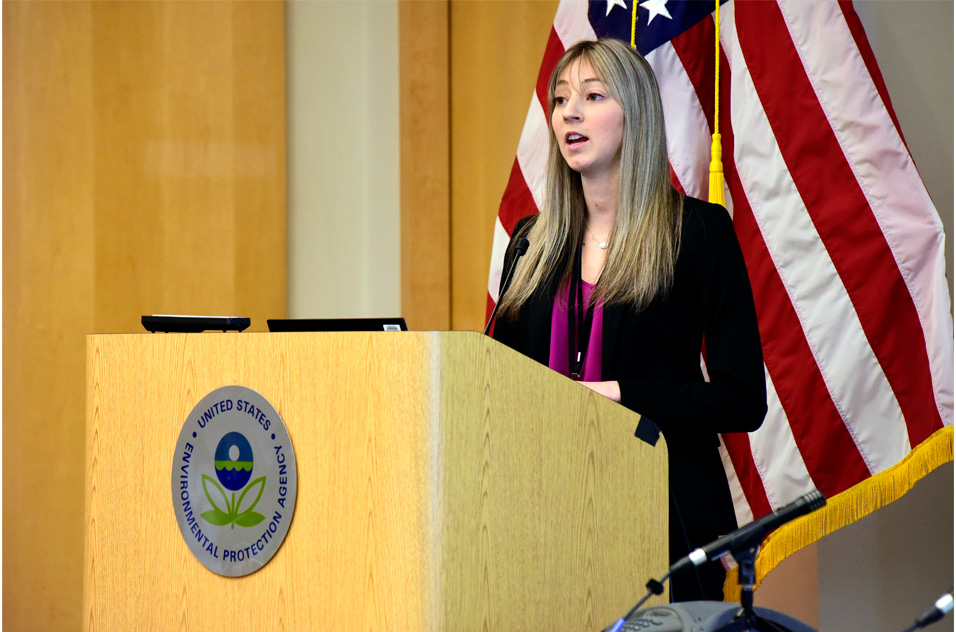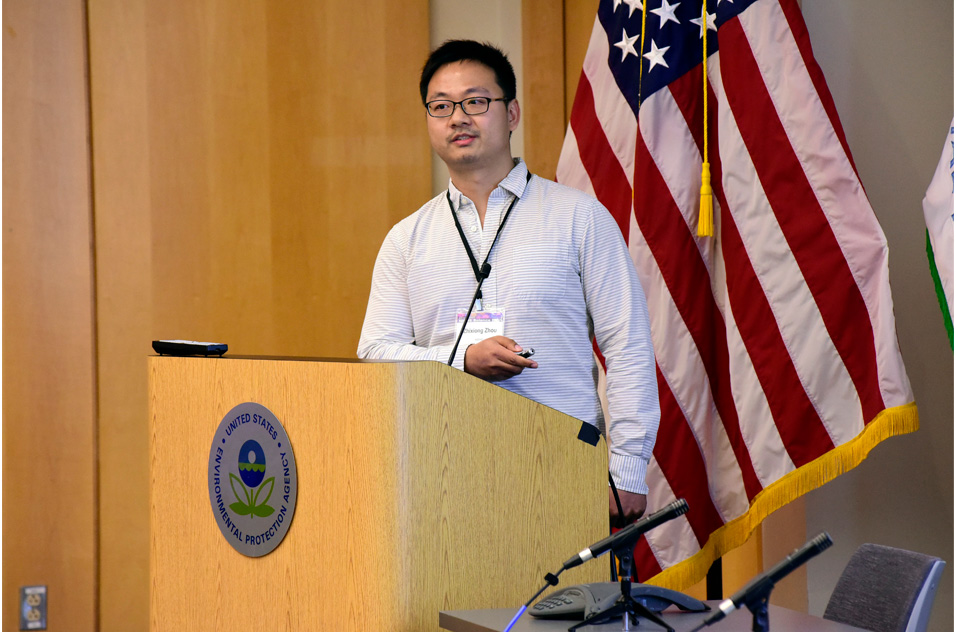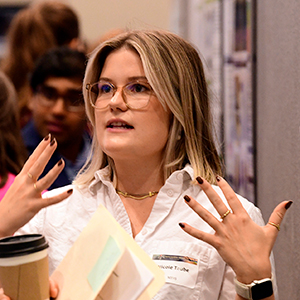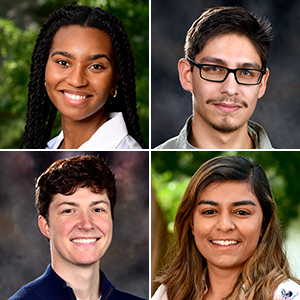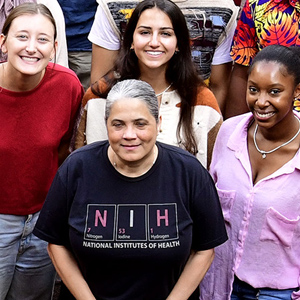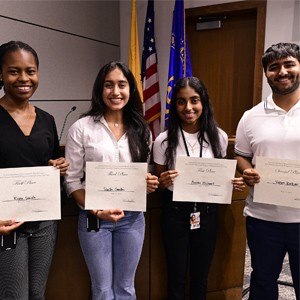On Nov. 7, NIEHS postdoctoral, predoctoral, and postbaccalaureate fellows gave oral presentations as part of the institute’s 17th Annual Science Days. The two-day event celebrates the work of trainees and helps them share research with colleagues and potential collaborators.
Because of construction at Rodbell Auditorium, Day 1 activities were held at the nearby U.S. Environmental Protection Agency (EPA) Research Triangle Park campus. Scientists from universities across North Carolina visited EPA to listen to trainees and join NIEHS principal investigators and staff in judging the Best Oral Presentation contest.
 'NIEHS Science Days allows people to learn more about the good science we do,' Zeldin said. (Photo courtesy of Steve McCaw)
'NIEHS Science Days allows people to learn more about the good science we do,' Zeldin said. (Photo courtesy of Steve McCaw)In his introduction, NIEHS Scientific Director Darryl Zeldin, M.D., gave an overview of the festivities to come. The second day would include poster presentations and a grant writing workshop (see story). He added that winners of the Mentor and Fellow of the Year (see sidebar) would be announced but not awarded until the auditorium re-opens in early 2020.
When Assistant Scientific Director Hans Luecke, Ph.D., took the podium, he acknowledged the EPA and all the work performed by members of the Science Days Steering Committee, namely the NIEHS Trainees Assembly and Special Assistant Joel Abramowitz, Ph.D. 'Joel has been the life blood of this event and continues to be the key advisor for everything we do,' Luecke said.
All things science
The presentations were broken into three sessions, each chaired by a representative from the institute’s intramural and extramural divisions, and the National Toxicology Program. Leping Li, Ph.D., Laura Thomas, Ph.D., and B. Alex Merrick, Ph.D., respectively, introduced the speakers and kept the conference running smoothly and on time.
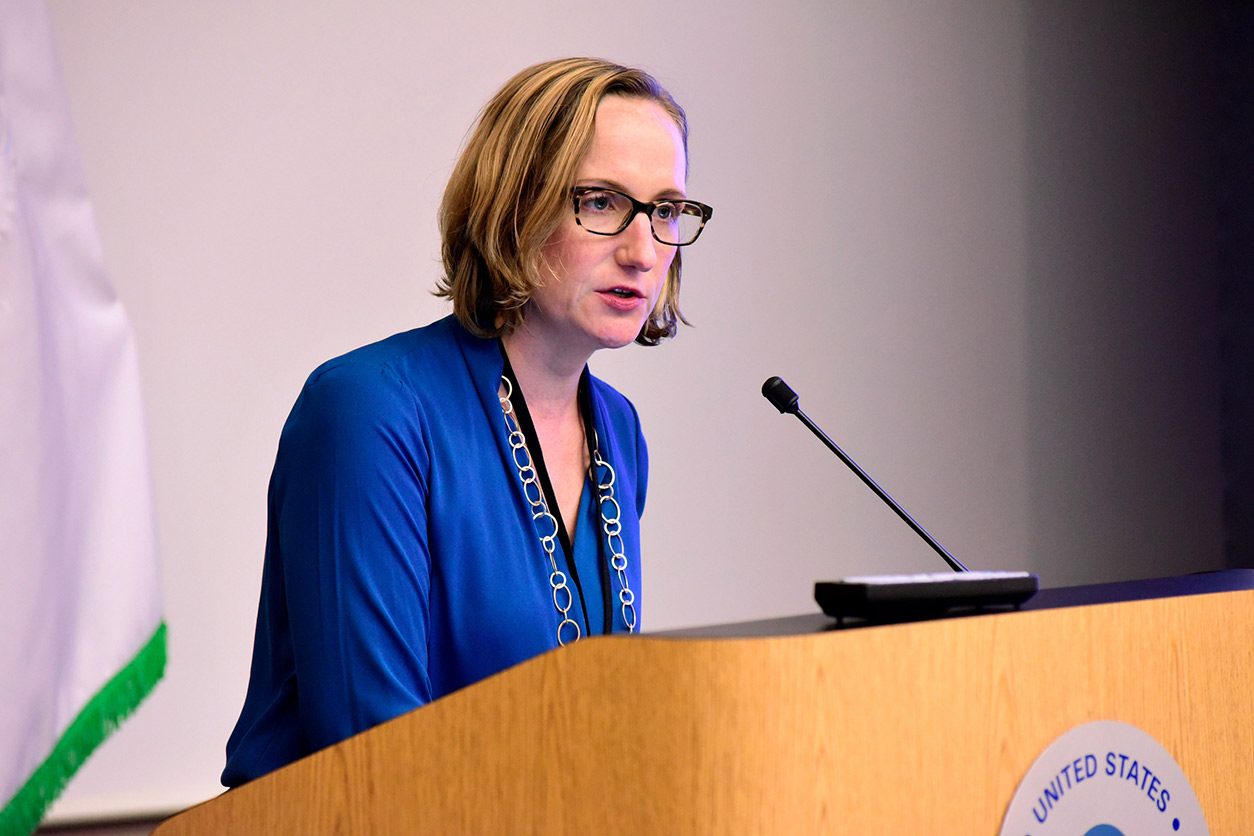 Thomas, a scientific review officer in the Division of Extramural Research and Training, chaired the second session. (Photo courtesy of Steve McCaw)
Thomas, a scientific review officer in the Division of Extramural Research and Training, chaired the second session. (Photo courtesy of Steve McCaw)Talks were given by NIEHS Intramural Research Training Award (IRTA) fellows and visiting fellows and were approximately 10 minutes long, with a few minutes for questions and answers.
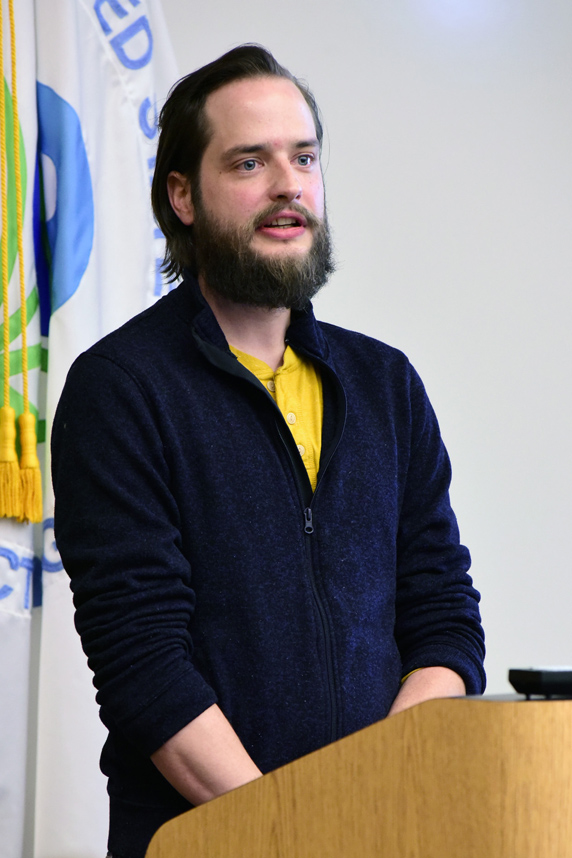 Kresovich and his mentor Jack Taylor, M.D., Ph.D., have been involved in several key studies, including one that links older biological age to increased breast cancer risk. (Photo courtesy of Steve McCaw)
Kresovich and his mentor Jack Taylor, M.D., Ph.D., have been involved in several key studies, including one that links older biological age to increased breast cancer risk. (Photo courtesy of Steve McCaw)Jacob Kresovich, Ph.D., a postdoctoral fellow in the Molecular and Genetic Epidemiology Group, explained that the composition of circulating white blood cell profiles may be associated with breast cancer risk. His research pulled from blood samples collected from thousands of women who were followed for more than a decade.
'Women with the lower proportions of circulating white blood cells experienced higher incidence of breast cancer within one year of blood draw, while those with higher proportions of B cells [a subtype of white blood cells] experienced increased incidence four or more years later,' Kresovich said.
Dahea You, Pharm.D., Ph.D., a postdoctoral fellow in the Molecular Toxicology and Genomics Group, engaged the audience with research that is part of Tox 21, a federal interagency collaboration for developing better ways to rapidly determine the health effects of large numbers of chemicals. She and research partners at the EPA and the U.S. Food and Drug Administration are working on a cell-based system that can incorporate genetic variation to better understand population differences in response to chemical exposure.
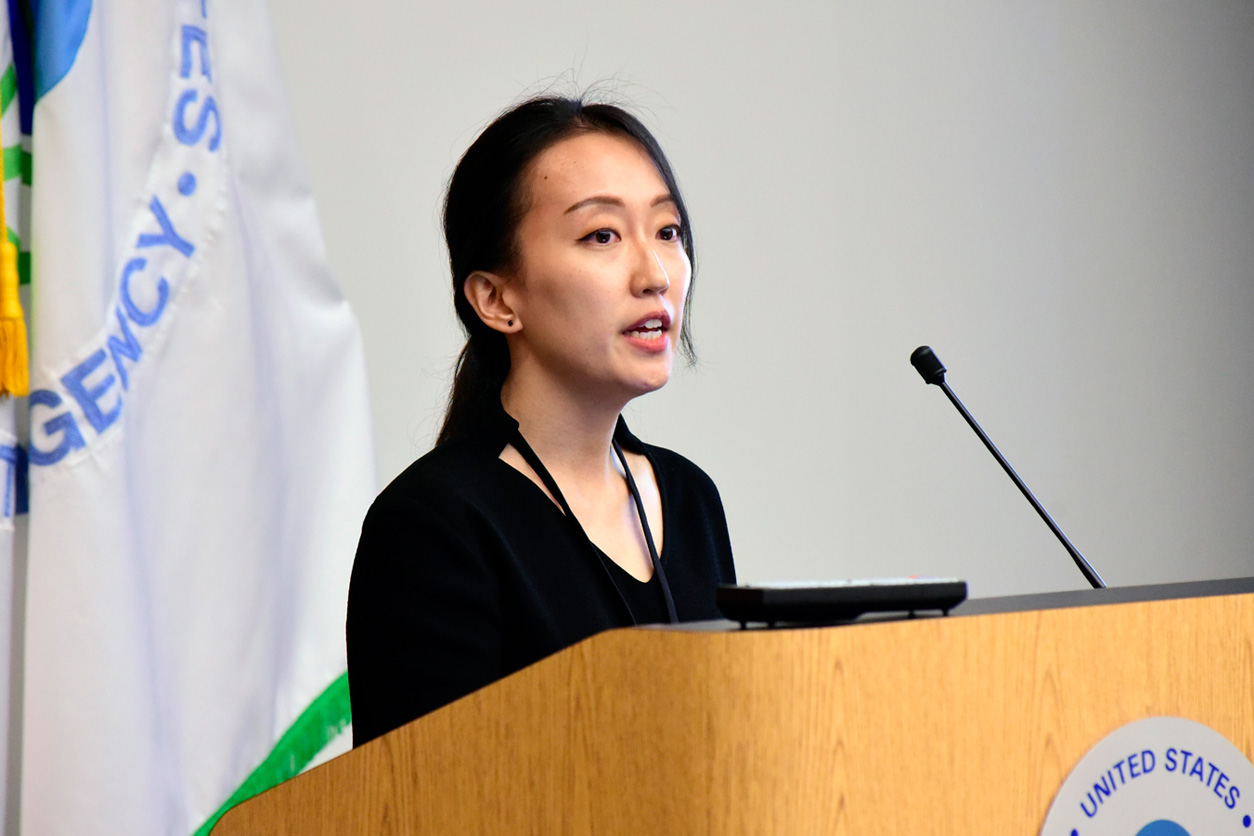 'The mouse model we use can serve as a great testing platform to assess toxicodynamic variability that is relevant to human populations,' You said. (Photo courtesy of Steve McCaw)
'The mouse model we use can serve as a great testing platform to assess toxicodynamic variability that is relevant to human populations,' You said. (Photo courtesy of Steve McCaw)Best of the best
With so many excellent talks, it was difficult for the judges to pick the most outstanding. However, the presentation by Jonathan Busada, Ph.D., a postdoctoral fellow in the Molecular Endocrinology Group, stood out. He talked about how steroid hormones called glucocorticoids and androgens work together to regulate gastric inflammation. Busada won Best Oral Presentation.
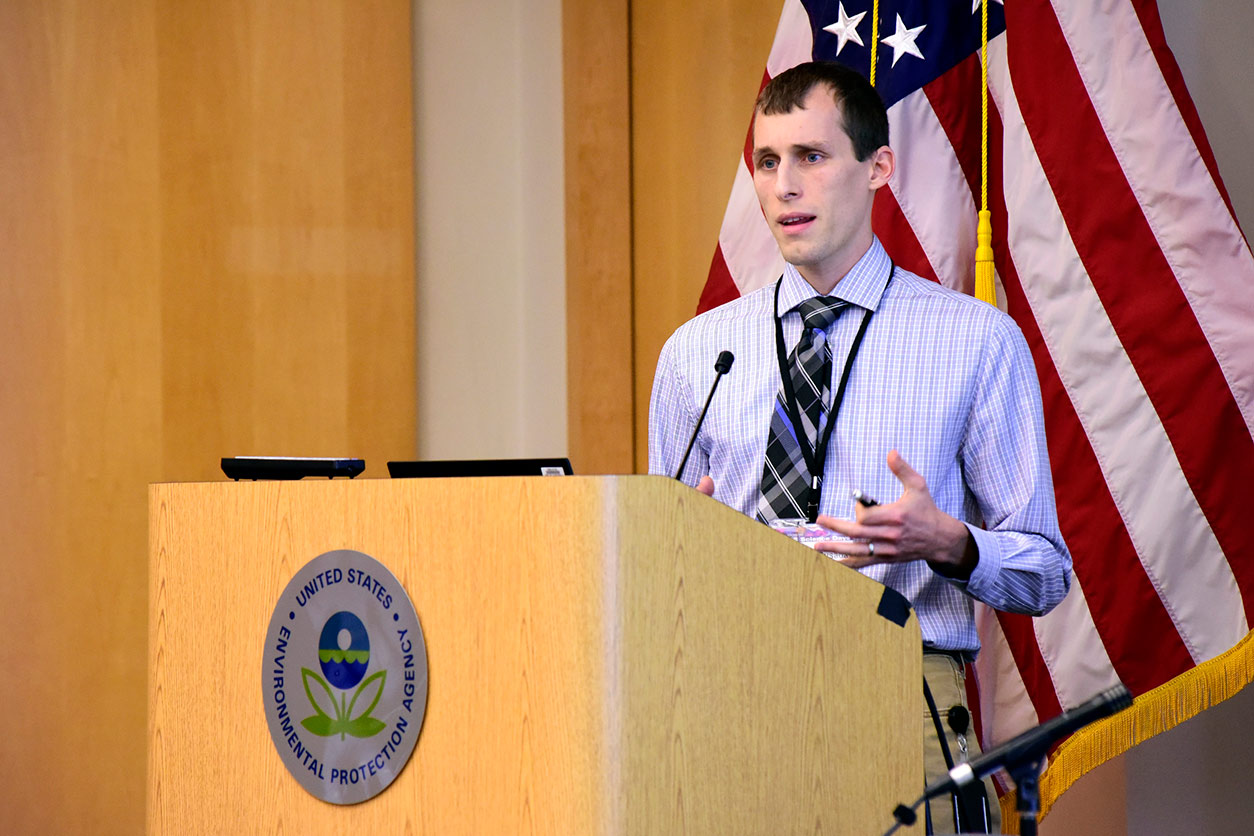 Busada’s talk was titled 'Stress and Sex Regulation of Gastric Inflammation.' (Photo courtesy of Steve McCaw)
Busada’s talk was titled 'Stress and Sex Regulation of Gastric Inflammation.' (Photo courtesy of Steve McCaw)'We all know that the stomach is the organ that digests food, but it has other important functions, such as killing billions of bacteria and other ingested pathogens,' he said. 'It is important for the stomach to moderate its immune response, so using a mouse model, I found a novel role for glucocorticoids and androgens in this process.'








